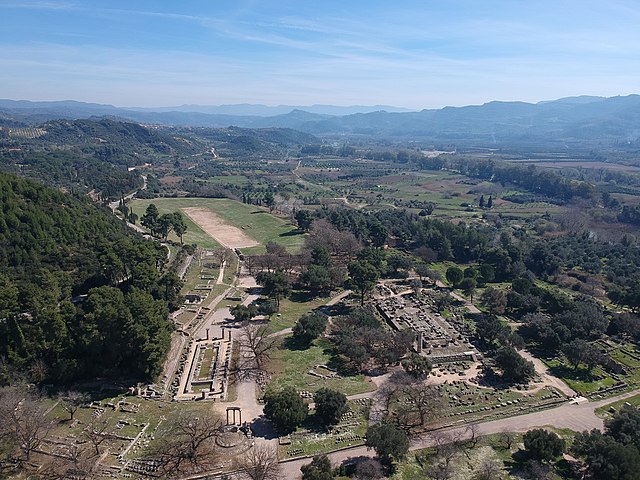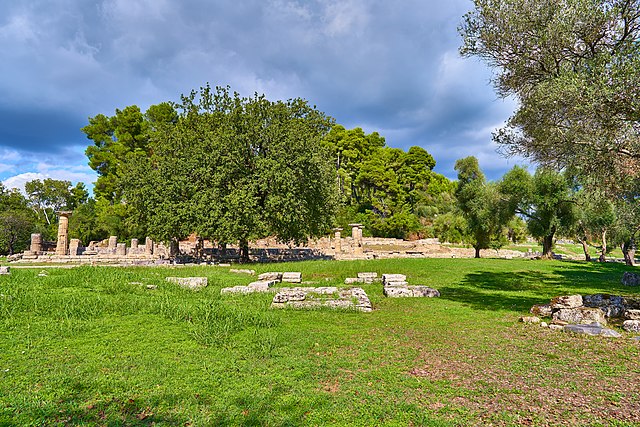A prytaneion was seat of the prytaneis (executive), and so the seat of government in ancient Greece. The term is used to describe any of a range of ancient structures where officials met, but the term is also used to refer to the building where the officials and winners of the Olympic Games met at Olympia. The prytaneion normally stood in the centre of the city, in the agora.
Prytaneion of Panticapaeum, II b.c. (Kerch, Crimea)
Lato
Butrint
Ephesus
Olympia, officially Archaia Olympia, is a small town in Elis on the Peloponnese peninsula in Greece, famous for the nearby archaeological site of the same name. This site was a major Panhellenic religious sanctuary of ancient Greece, where the ancient Olympic Games were held every four years throughout Classical antiquity, from the 8th century BC to the 4th century AD. They were restored on a global basis in 1894 in honor of the ideal of peaceful international contention for excellence.
View of the Palestra, a center for wrestling
The archaeological site showing the stadium, the temple of Hera, the temple of Zeus. The line of trees, upper right, border a road to the north of the Alfeios. Geologically the site is terraced into the gentle north slope of the Alfeios valley visible in the background.
Peribolos wall remains seen in the foreground from the south against the backdrop of the Temple of Hera
Crypt (arched way to the stadium)








